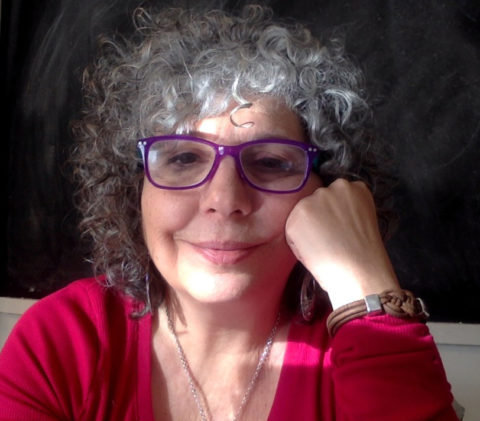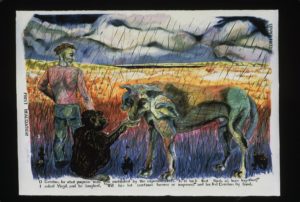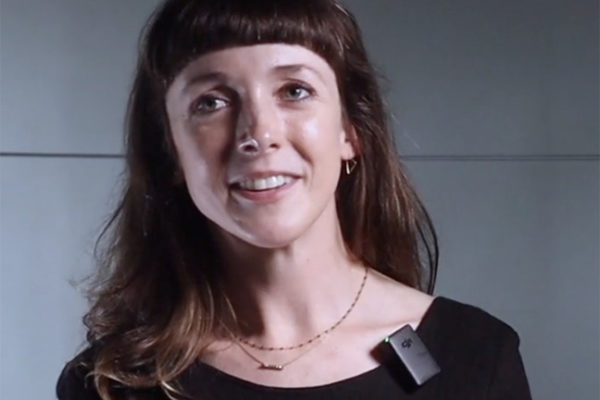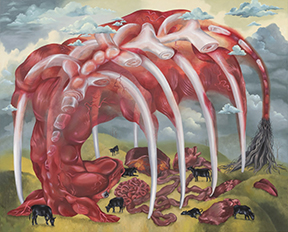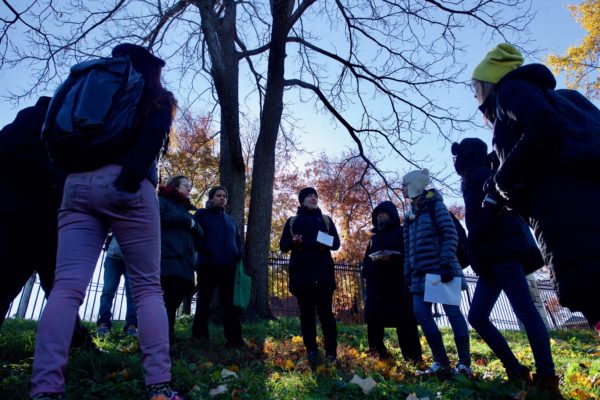The Creative Animal
An Interview with Carol Gigliotti
In 1988, artist and scholar Carol Gigliotti presented a body of work called “The Dante Series” to Tom and Nancy Regan of the Culture & Animals Foundation. Thirty-four years afterwards, we reached out to Carol, to talk about her work then and her new book, The Creative Lives of Animals, published by NYU Press. Artist and Navab scholar Victoria Reshetnikov talked to Carol Gigliotti about her life as an artist and scholar, the Regans, and her new book. (You can watch a video presentation of “The Dante Series” here.)
Writing about “The Dante Series” in 1988, Carol wrote: “‘The Dante Series,’ begun in 1988, is a re-ordering of Dante’s traditional moral universe in his great poem The Divine Comedy. However, the images and texts are my own. In my version, Virgil [Dante’s guide through the Inferno] is a Rhesus monkey who guides our contemporary Dante through the Hell of animal experimentation and Dante’s own psychic depression. What is it in us that allows us to cause suffering in other creatures and what is it in the world that allows the suffering of man or animal to exist?
“If we find that it is the pain and fear within us which causes us to subsequently cause pain and fear, how do we withdraw ourselves from that cycle without withdrawing ourselves from the world? What moral and spiritual connections are there to guide our actions in a universe that at times seems overwhelmingly cruel and uncaring? For me, a key to understanding these connections has been our relationship with animals. Events in my own life and the series itself carried me through these ideas. It pushed me into struggling with Dante over abysses that seemed so terrifying they appeared at times absurdly funny. The monkey, Virgil, guided Dante and me. Clues to the answers to our endless questions concerning good and evil, to questions of our soul’s worth, to questions of our place in the universe are spread throughout the natural world, if only we will look for them.”
Victoria Reshetnikov (VR): Tell us a bit more about yourself and your role in critical animal studies.
Carol Gigliotti (CG): I’ve been involved in animal activism and animal rights for quite a long time in various forms, both artistically and academically. I even helped birth the field of critical animal studies, or at least the definition for it.
I was an artist first and received a master’s in printmaking a few decades ago. Then, when I was in my forties, I received my doctorate at the Advanced Computing Center for Arts and Design in Columbus, Ohio. I then worked as an assistant professor at Ohio State and taught at the Emily Carr University of Arts and Design for 12 years. Now I’m Professor of Dynamic Media Emerita and critical and cultural studies.
One of the first works I produced as an artist was “The Dante Series” (1984–1988). It was through this series that I met Tom Regan. I hadn’t finished the series yet, but it was being displayed at a gallery in Washington D.C. I happened to stop in and found that there was a note from Tom for me about my work. At that point, I had already known about Tom Regan’s book [The Case for Animal Rights, published in 1983]. We met, and I got to know Tom and Nancy really well, and we became very close friends.
Besides my artwork, I’ve written a lot in the area of animal rights and critical animal studies. The latter field in particular is really a critique of humans and how they treat everything as inferior to themselves. So, the field is both interested in animals but can also become very politically and socially oriented. The best thing about critical animal studies is how it emphasizes and takes up the task of discussing the actors in the present who are continuing to make life difficult for everyone on earth.
VR: What are you working on now?
CG: I’ve been mostly working on publicity leading up to the release of The Creative Lives of Animals, on November 22nd. The book is based on and supported by the work of biologists, evolutionary biologists, ethologists, conservation biologists, and many other specialists. Honestly, their ideas about animals and their qualities are often quite similar to those of an animal rights advocate. These specialists might not talk about animals in terms of animal rights, but they certainly feel that the qualities that animals have are equal to ours. I’ve also written an opinion piece in The Scientist that touches on some of the ideas in The Creative Lives of Animals, along with an excerpt from the book.
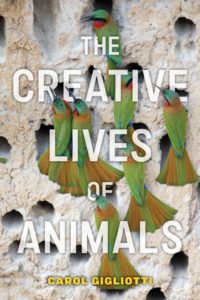 VR: What’s your mission going forward as an animal rights activist?
VR: What’s your mission going forward as an animal rights activist?
CG: I’ve been recently more focused on addressing current misconceptions about animals by the general public. Many people still ask, for example, if animals have culture. Of course they do! But there’s still this idea that what we do, our culture, is somehow better than that of nonhumans. But what even is our culture? Is it Western culture, Eastern culture, or a particular Indigenous culture? Humans themselves can’t agree on a culture; how can we decide anything for animals in this regard?
I also think it’s important to look at animals, not as victims. Of course, it is still important for us to look at animals in this way, and I’m not saying that we shouldn’t keep a focus on this theme. But in The Creative Lives of Animals, I really wanted to look at something more positive about the natural world. I wanted to investigate the unseen and often overlooked ways animals are just so inspiring and creative. I want to stress that their existences aren’t just only about pain, and there are so many ways to connect with, empathize with, and advocate for them that don’t ask us to look at violence and pain.
Watch the video recording about “The Dante Series” here. You can listen to Carol being interviewed on the Knowing Animals podcast here.


